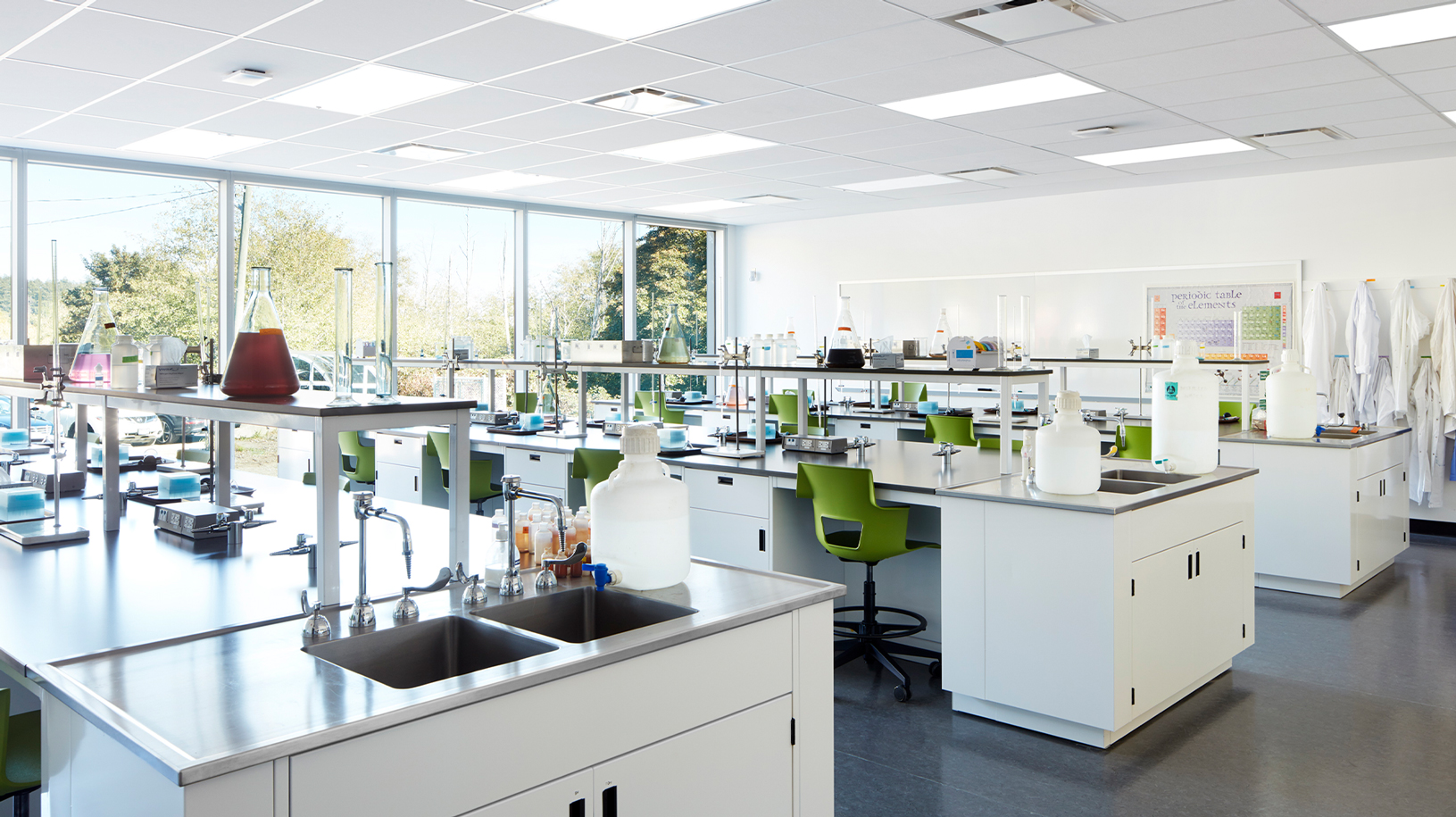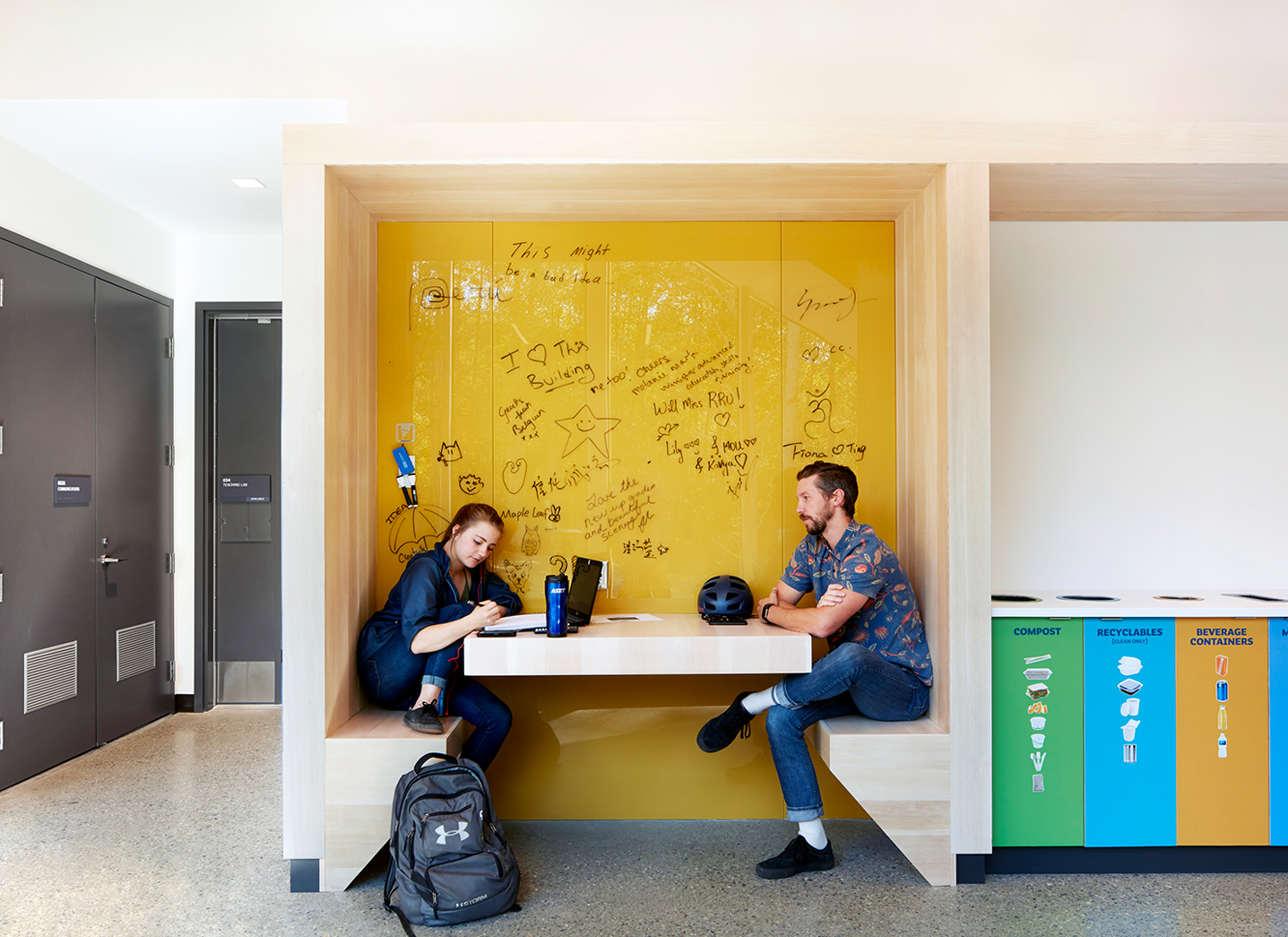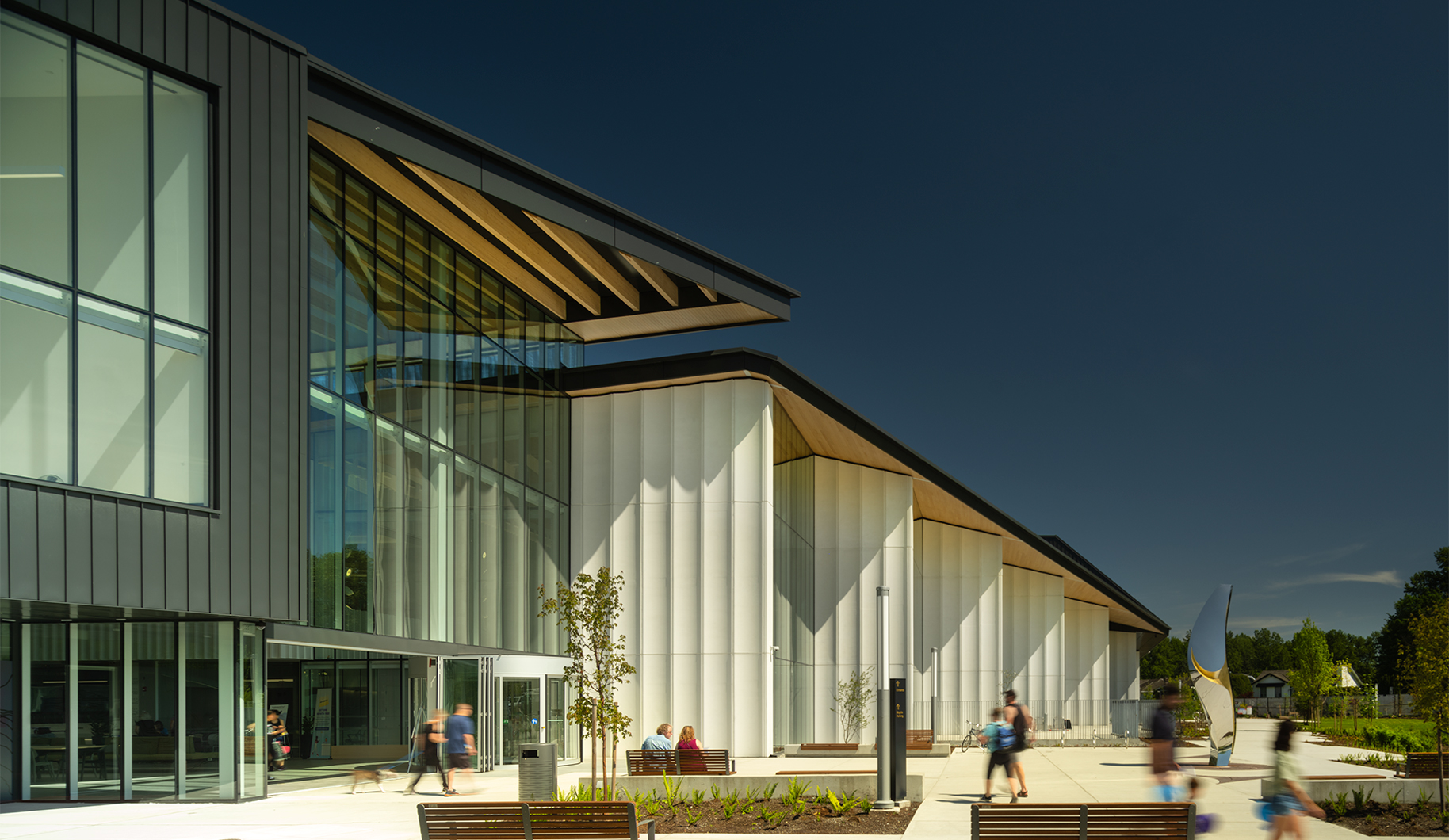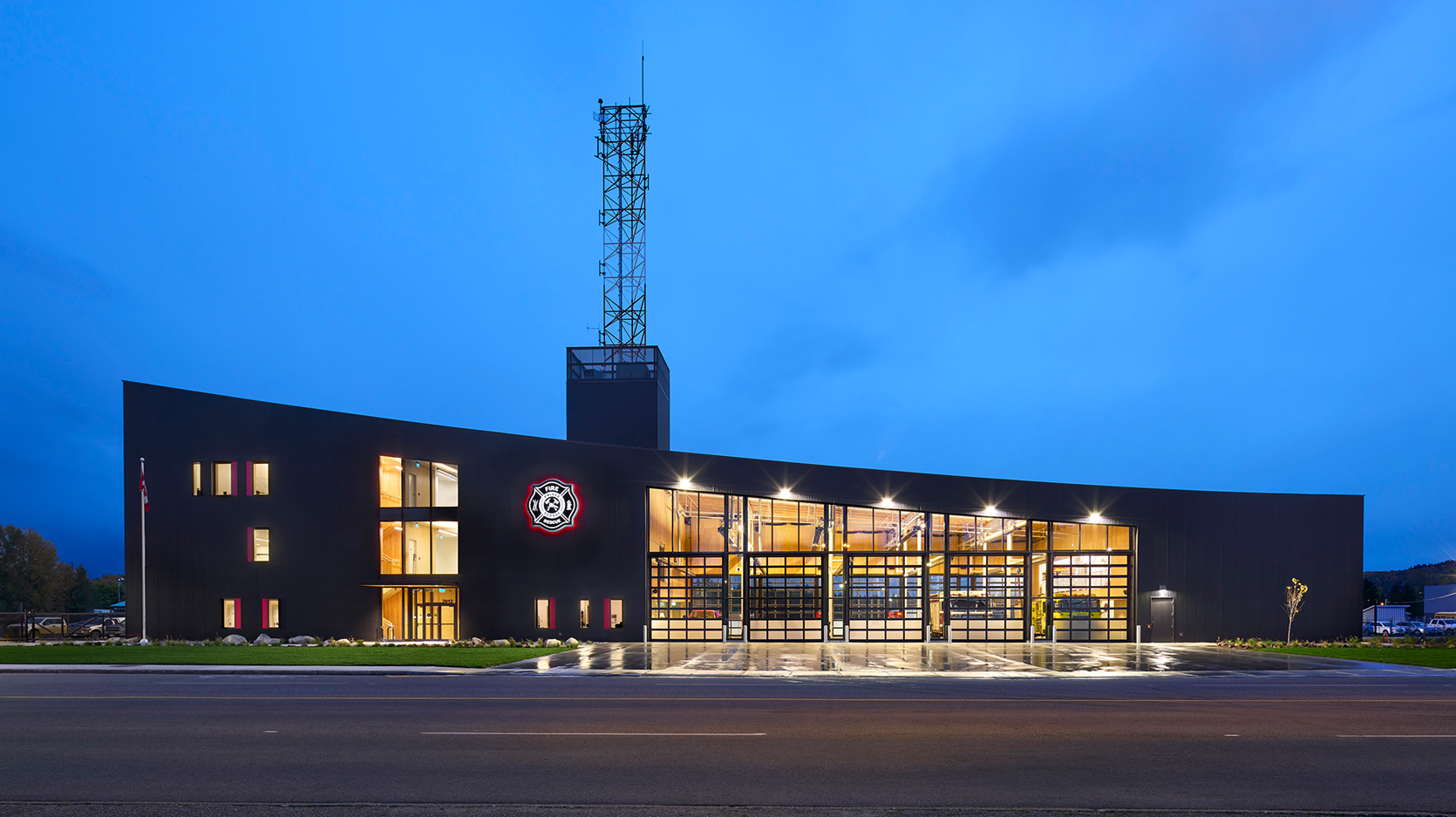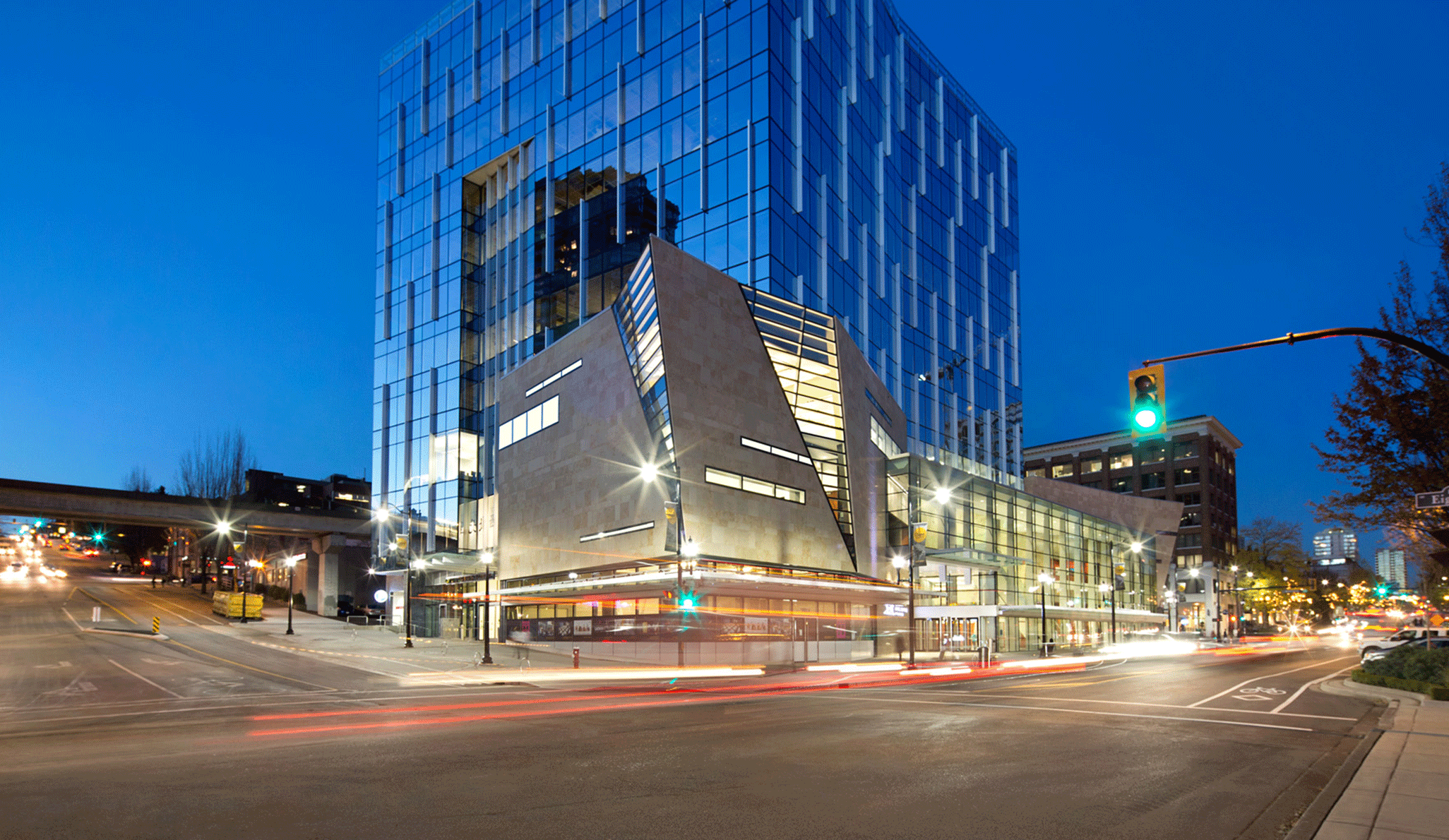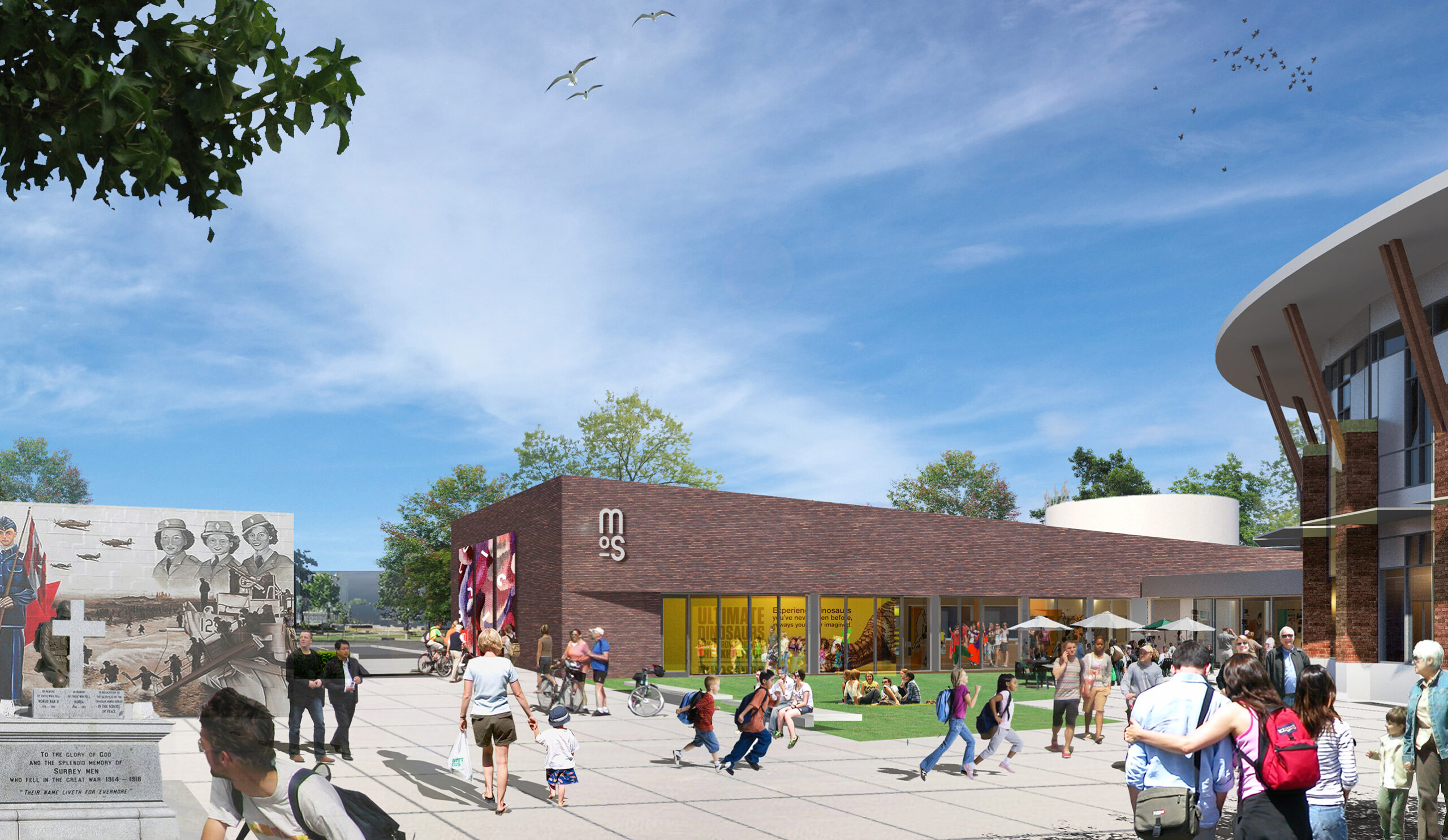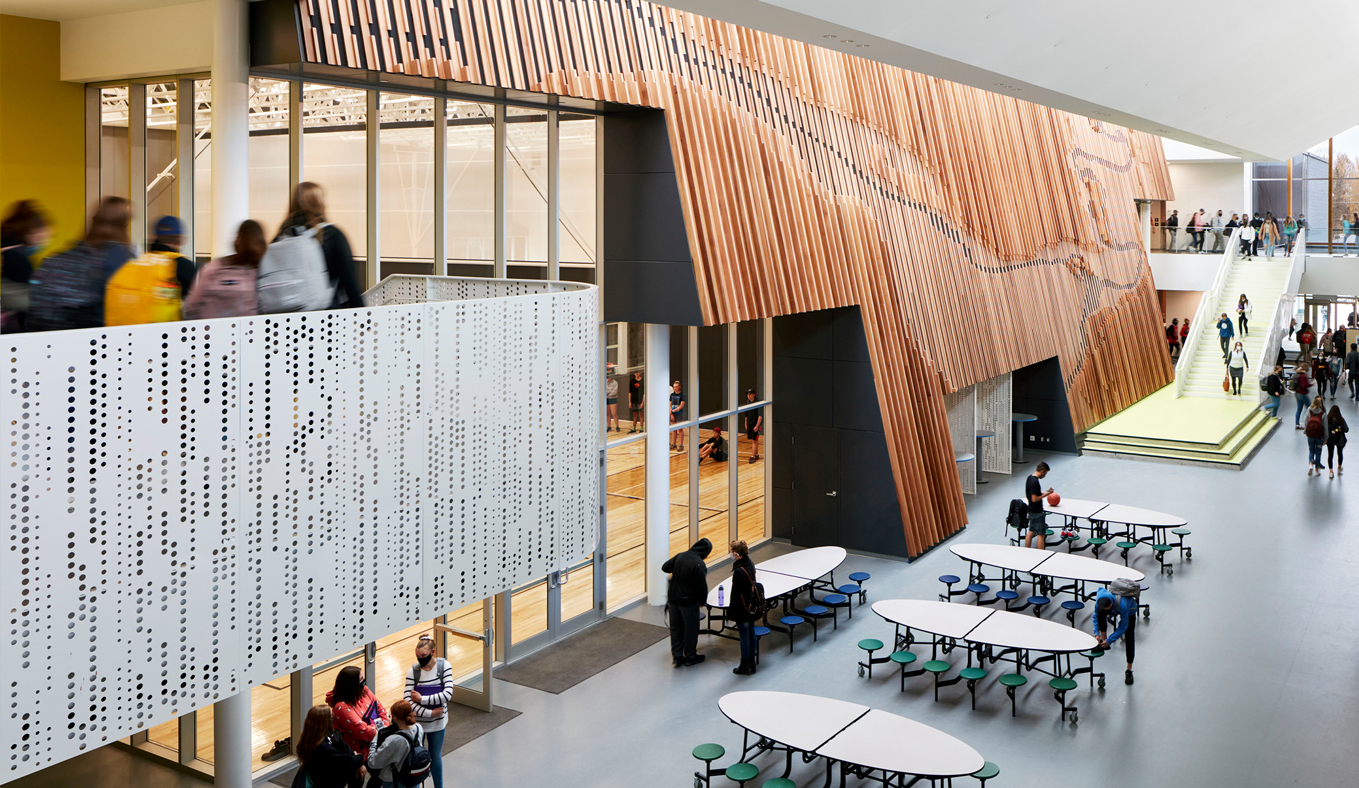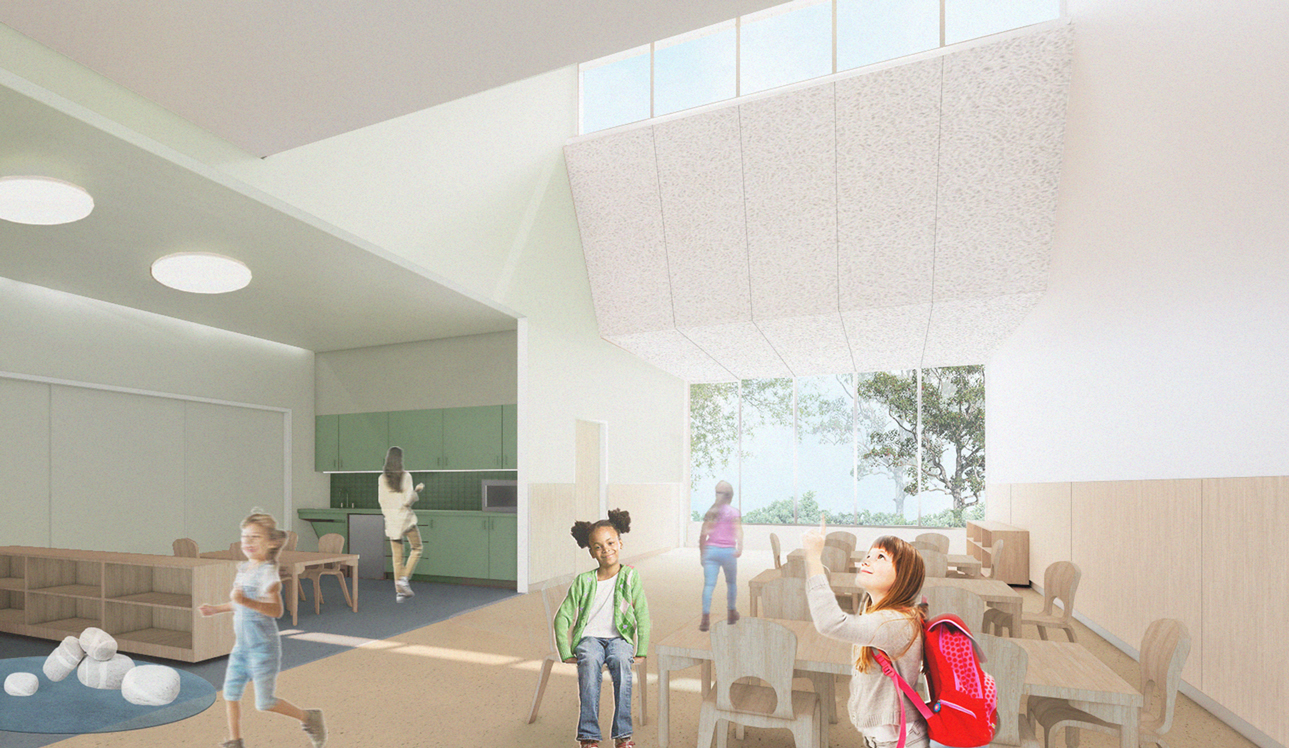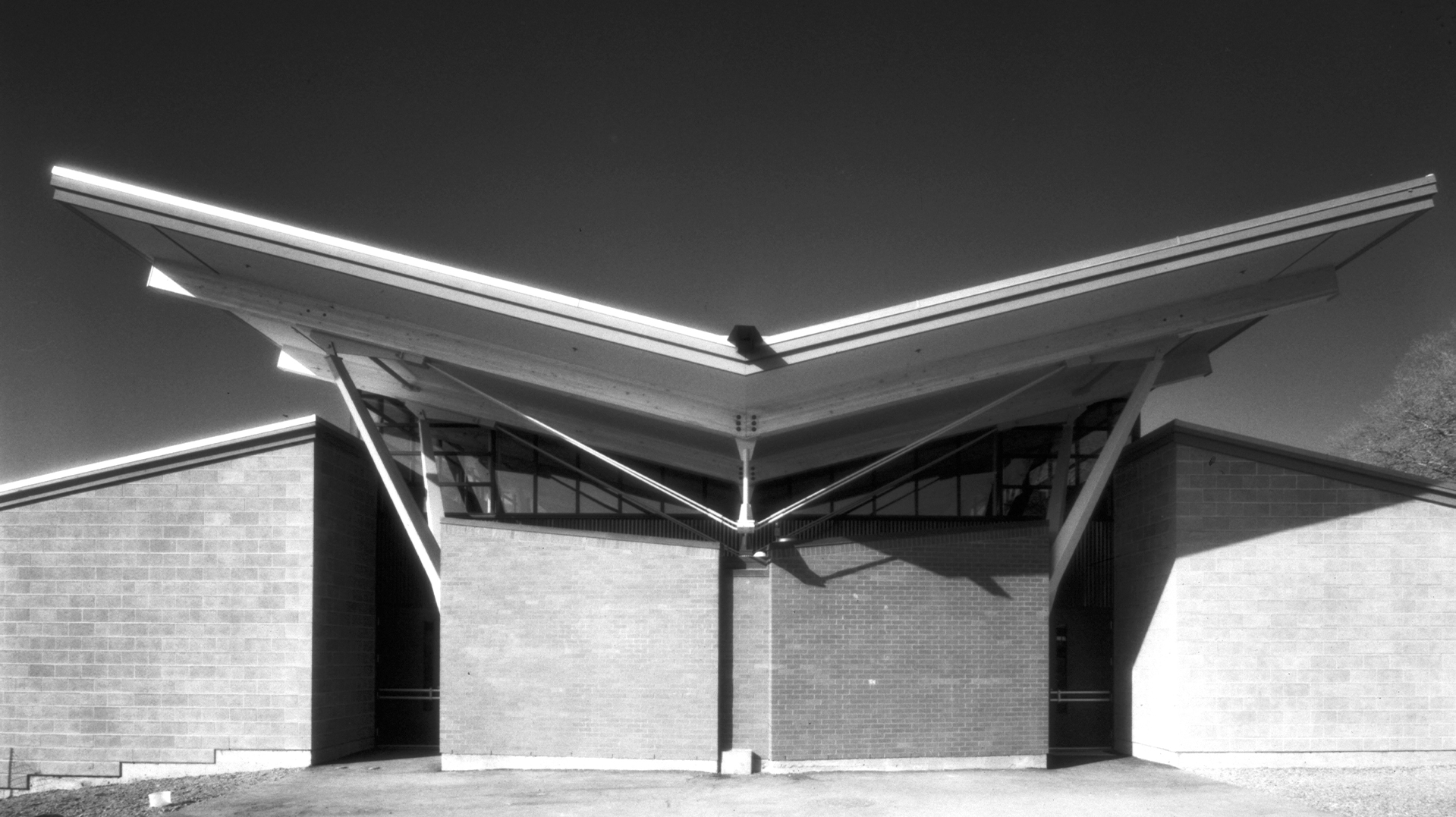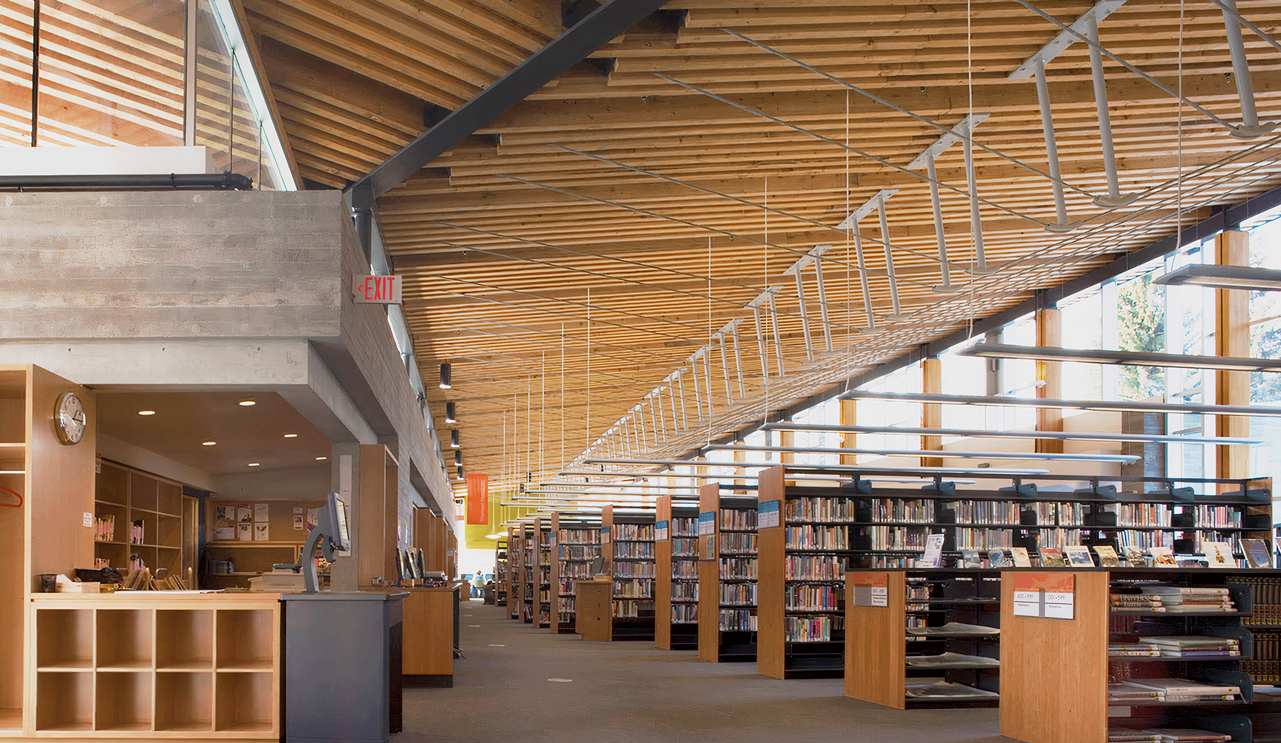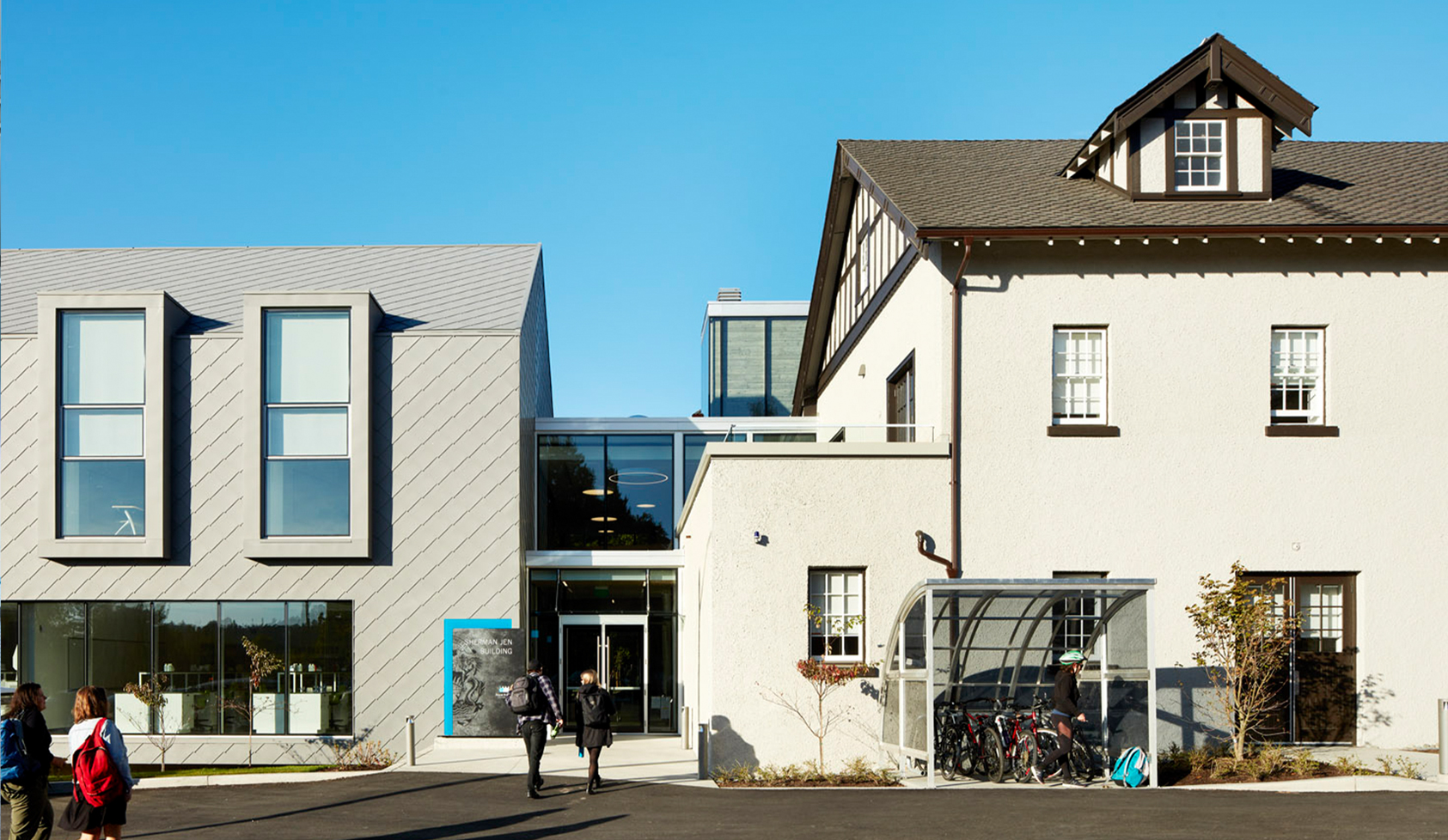
Royal Roads University Sherman Jen Building
Location
Colwood, BC
The Sherman Jen Building revitalizes and adds to the Hatley Carriage House Mews—a federal heritage building with an interesting history—into a state of the art environmental science laboratory, teaching, and undergraduate hub, on Royal Roads University’s Colwood campus.
Built in 1912 as a horse stable on the Dunsmuir Estate, the building was later turned into a car garage, before being used by the Department of National Defense for rifle training, and then by the university as a conference centre.
Our renovation gives the building its fifth lease of life, an example of how adaptive reuse can preserve heritage while meeting today’s higher education needs—with little environmental impact.
Disciplines
Areas of impact
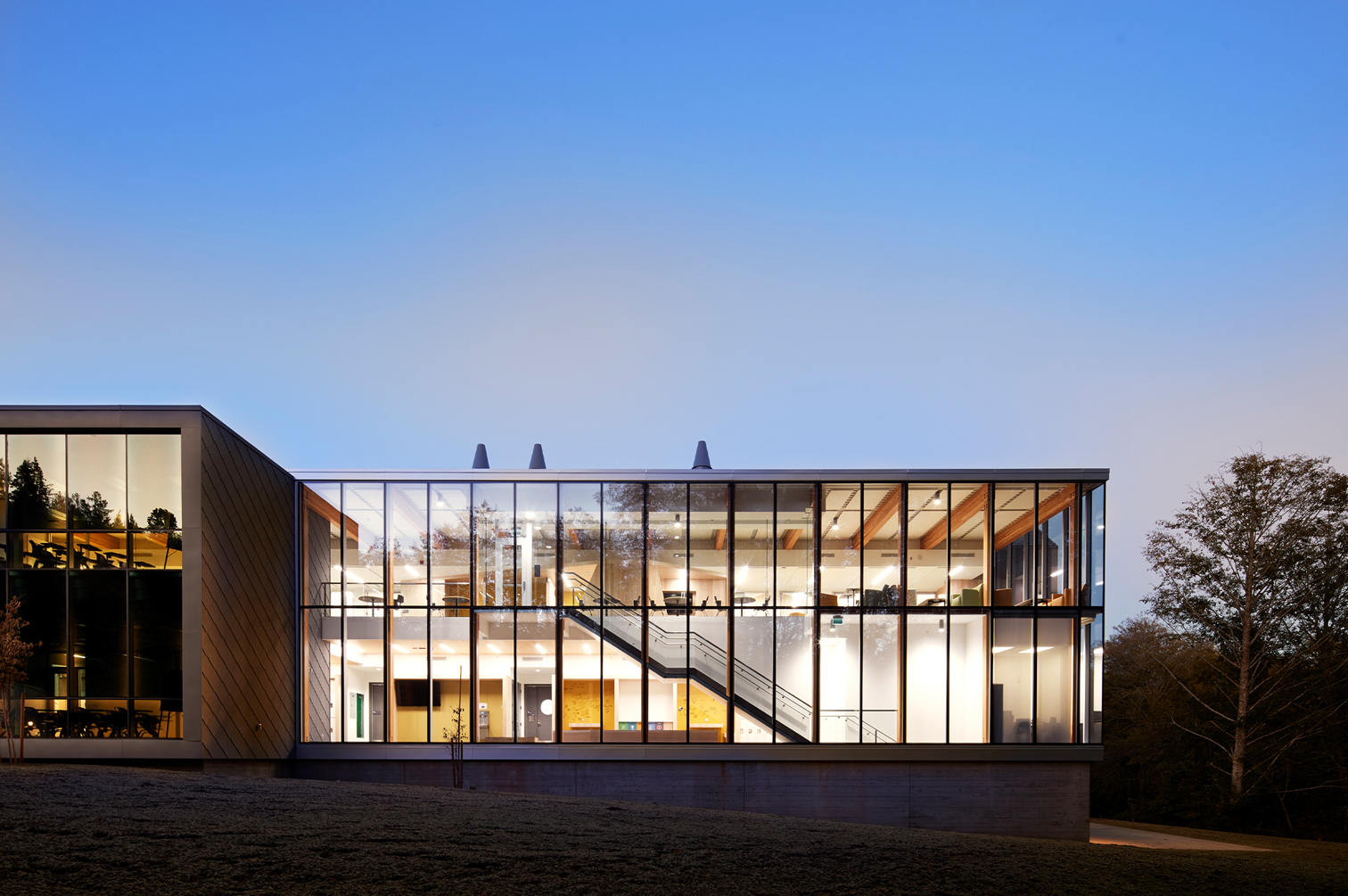
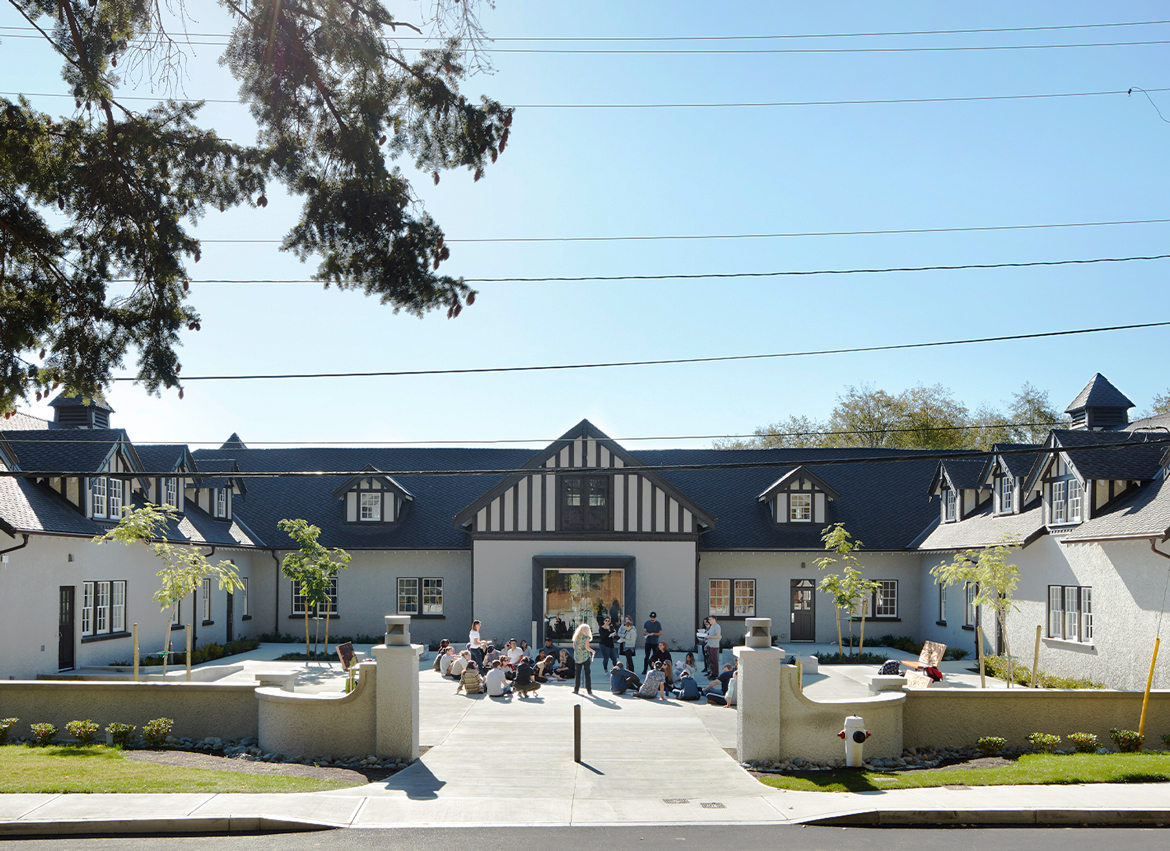
Encouraging social connection
RRU had traditionally been a popular university for people seeking professional development through blended learning or short campus residencies. Through increasing demand, that focus has evolved.
Now hosting undergraduate programs where students live on campus full time, the university needed places for people to socialize between classes. The Sherman Jen Building offers that, providing a space to gather and share meals, in addition to working and studying in its modern research labs.
The building promotes a sense of community by encouraging casual connection in its ‘in-between’ spaces, while its staff and faculty bring a rhythm of daily life—eliminating static times when teaching activity wanes, and contributing to the buzz of a vibrant, social campus.
Guided by the Heron People Circle
Royal Roads University is located on the traditional lands of the Xwsepsum (Esquimalt) and Lekwungen (Songhees) peoples, which have been part of the fabric of the life of Indigenous communities long before Hatley Castle was built, and will be long into the future.
RRU were sensitive to this and met regularly with the Heron People Circle of Indigenous Knowledge Keepers to understand how this building could support Indigenous learners. Native artists contributed placemaking elements in the building courtyard entry, while student social spaces allow for diverse indigenous programming and welcoming ceremonies.
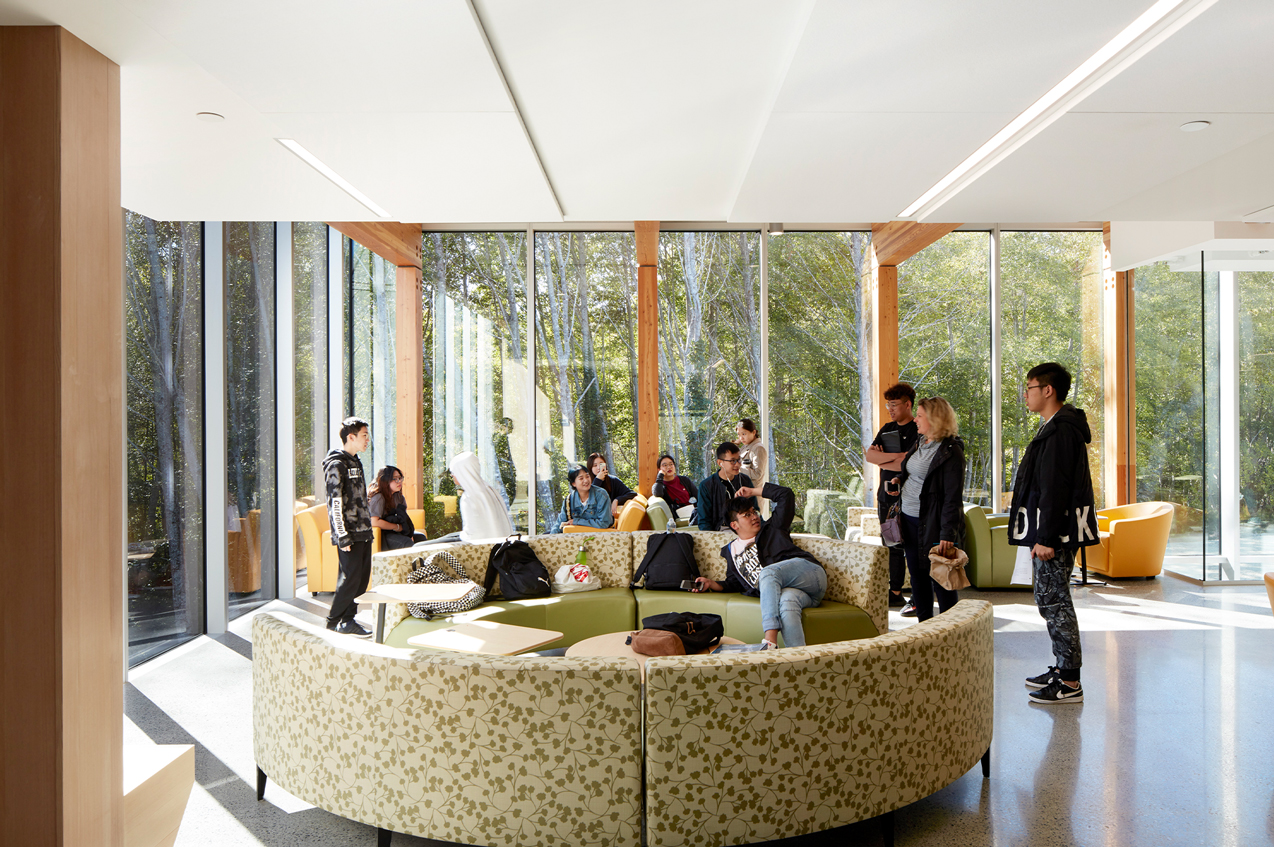
The benefits of adaptive reuse
Adaptive reuse has helped Royal Roads University maintain the ecology and natural beauty of its Colwood campus by limiting the growth of new buildings, reducing the need for demolition and landfill, and reusing existing materials.
The new Sherman Jen Building saves 44 tonnes of carbon emissions annually compared to the original Mews—accounting for 3% of the University’s target to cut greenhouse gases by 33%.
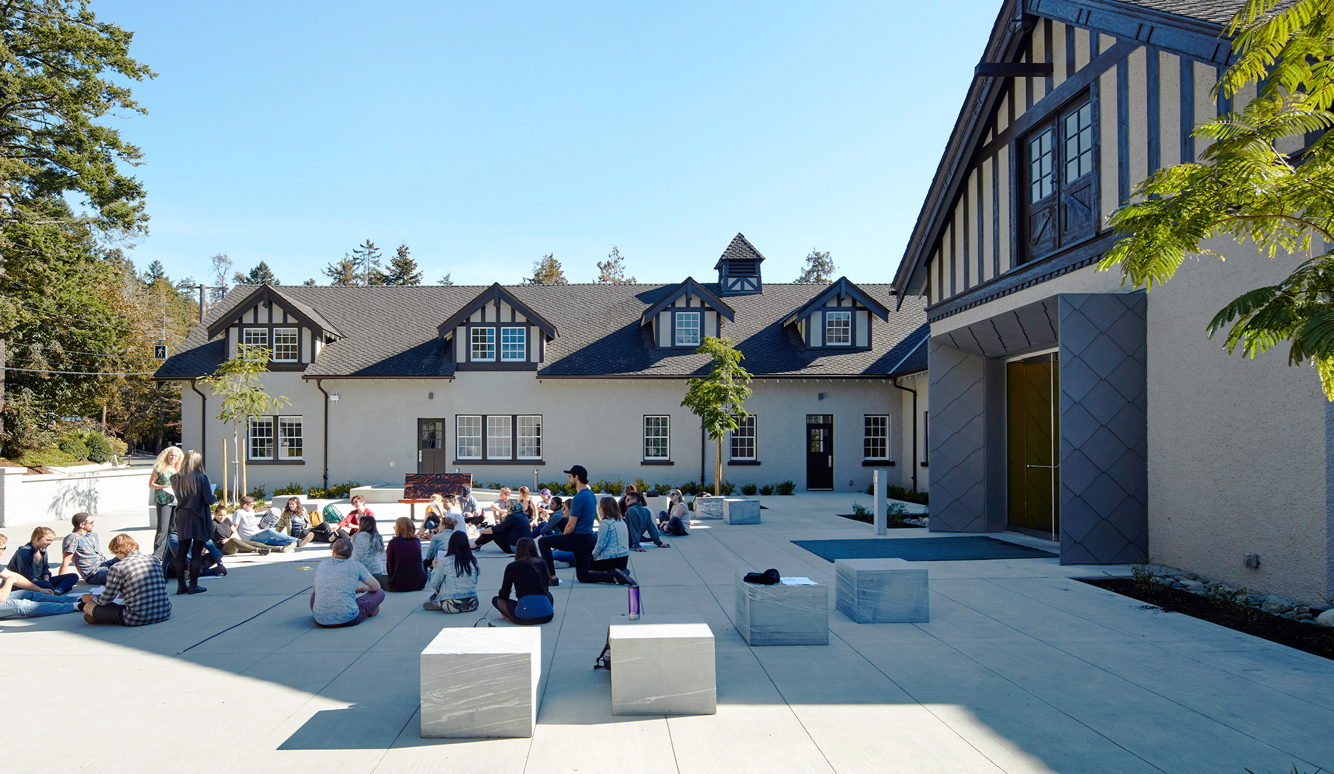
The revitalization of an Edwardian working stable block into a state of the art environmental research facility helps retain the working heart of the University estate, while showcasing the possibilities of historic buildings being reused to house groundbreaking research for the future of our planet.
